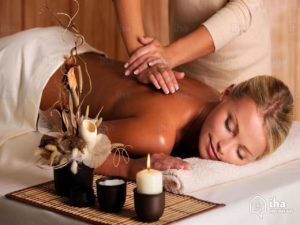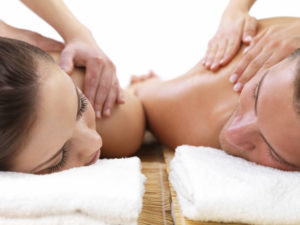Where touching begins, there love and humanity also begins”
ASHLEY MONTAGU
 SNEHANA is a Sanskrit word used for OLEATION. Sneha means “love” so the meaning of snehana is “loving your own body” which means self-massage. Ayurvedic massage therapy is not only meant for relaxation of mind and body but it is the most powerful balancing treatment which stimulates the body’s energy channels and helps in experiencing an inner awakening. If you want skin which is irresistible to the touch, the secret is to touch yourself.
SNEHANA is a Sanskrit word used for OLEATION. Sneha means “love” so the meaning of snehana is “loving your own body” which means self-massage. Ayurvedic massage therapy is not only meant for relaxation of mind and body but it is the most powerful balancing treatment which stimulates the body’s energy channels and helps in experiencing an inner awakening. If you want skin which is irresistible to the touch, the secret is to touch yourself.
SNEHANA is basically PURVKARMA (Pre-operative procedure) in Ayurveda which is done before Panchkarma procedures. It is also an important treatment for vata disorders.
It is of two types:
- INTERNAL OLEATION (Snehapana)
- EXTERNAL OLEATION (Abhyanga or body massage)
INTERNAL OLEATION
Oral intake of sneha (oil, ghrita, vasa & majja) is called internal oleation or Snehapan. According to the dose of snehan, it is further of three types:
- BRIMHANA SNEHAPAN
Snehana in which small dose is taken along with diet is said to be Brimhana snehapan. It gives strength to our body and balances vata. We also use this type of snehana regularly through khichadi and ghee.
- SHAMANA SNEHAPAN
The sneha which does not provocates the dosha and pacifies the provocated dosha is called shaman sneha. Medicated ghee is given to the patient when he/she gets hunger or is on an empty stomach. It is mainly indicated in Diabetes and Skin diseases.
- SHODHANA SNEHANA
This snehana is given before vaman and virechan therapy for 3-7 days. This type of sneha brings toxins from all over the body from cellular level into the stomach and then it is cleared by vaman or virechan therapy. It helps in cleansing the channels.
EXTERNAL OLEATION (ABHYANGA OR BODY MASSAGE)
In this therapy, medicated oil is applied to the patient with specific pressure and movements. There are 15 types of massages recommended in Ayurveda. Skin is our first line of defense from outside and reflection of everything that is going on inside of us. Our skin is seven layers deep. Each seven layer is connected to one of the seven dhatus or bodily tissues. So, when we stimulate or nourish the skin tissue, we also balance and nourish the blood, muscle, fat, bone, nerve and reproductive tissues as well.

Close up of man and woman getting massage together, on romantic holiday at the spa.
BENEFITS OF THE MASSAGE
- Ayurvedic massage is a powerful stress management tool that reopens blocked energy channels and balances the psychophysiology.
- It relaxes and tones the muscles and stimulates glands under the skin to produce hormone serotonin, which calms the mind and body. It helps in inducing sleep.
- It promotes drainage of the lymphatic system which increases immunity. It increases WBC count and Antibodies in the blood.
- It relieves the weakness and pain in the body by balancing vata. It strengthens the body.
- Ayurvedic massage slows the aging process by removing toxins from the skin. Once the oil is absorbed into the skin, it lubricates the internal environment, loosens stored up toxins and carry them back to the digestive tract for elimination.
- It also stimulates Dhatu-agni i.e. metabolic fire of each tissue and thus enhances OJAS and helps in weight management.
- The oils used in massage get absorbed in dermis within 5 minutes and in all seven layers of skin within 8-10 minutes. It improves blood circulation, heats up the body and gives natural softness and glow to the skin.
- Ayurvedic massage increases the prana energy and Tej in us. It purifies, nourishes and tones the body on a deep cellular level and increases the healing process.
- Deep detoxifying and rejuvenating massage clear away the dirt, dead cells, and AMA i.e. stored up cellular waste beneath the skin.
- An ayurvedic massage is a tool for cultivating blissful awareness which creates ultimate beauty.


